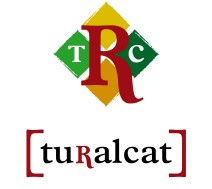To remember the traces of a history full of events
La Noguera was the vanguard of Old Catalonia and an important part of the Urgell county. This fact left its mark in towns, castles, churches and monasteries. We can admire the best Romanesque architecture just visiting the Collegiate Church of Sant Pere in Àger, the Church of Santa Maria del Castell in Cubells, the Canonry of Sant Pere in Ponts, the cloister of the Monastery of les Avellanes, the Monastery of Santa Maria in Gualter or the small church of Santa Maria in Palau de Rialb. There are samples of the Gothic in Santa Maria de Balaguer, Santa Maria de Bellpuig de les Avellanes, Sant Salvador de Vilanova de Meià, Sant Joan de Térmens… Also the Gothic altarpieces in polychrome stone of Albesa, Castelló de Farfanya and Alòs de Balaguer are very interesting.
There are samples of the baroque on the facades of the churches of Santa Maria, in Algerri, and Sant Miquel, in Os de Balaguer, as well as on the altarpiece of the Verge del Roser in Ponts.
You can appreciate a sample of the Catalan Modernism in the Montiu de Balaguer house.
To admire a rich and varied artistic heritage
As the ancient county town of Urgell, Balaguer is one of the more important historical and monumental cities in our country. The Church of Santa Maria, the Formós castle, the Sant Domènec convent, the historical quarters of the city and the porch square of the Mercadal and the Romanesque Monastery of Santa Maria de les Franqueses stand out because of their monumental qualities.
There are also attractive monumental sets in Castelló de Farfanya, Àger, Cubells, Vilanova de Meià and Camarasa, as well as in the castles of Montsonís, la Ràpita, Ribelles, Vilamajor and la Baronia de Sant Oïsme. Interesting archeological finds from the Islamic and county life can be admired in the Museu de la Noguera. The paleontological wealth of the region is also notorious: we can find fossils and dinosaur footprint remains in Camarasa, as well as cave paintings in Os de Balaguer.
We can not forget the interesting mosaics of the roman town of Romeral d’Albesa, the dolmen of Sòls de Riu in la Baronia de Rialb and all the archeological sites, from different historical periods, distributed all over the territory.













